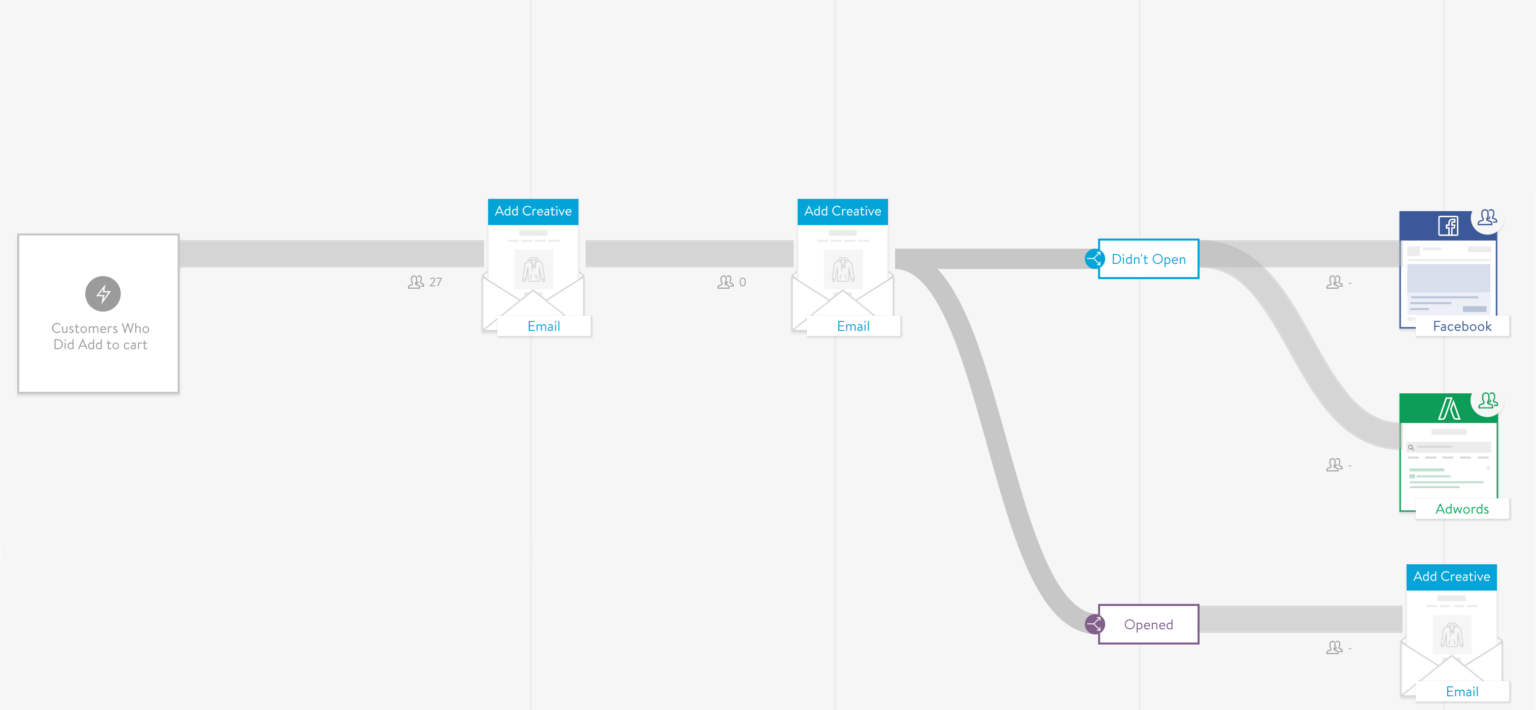
Thriving in the New World of Retail Marketing: How to Treat Customers as Individuals
Retail marketing has reached a fork in the road.
The one-size-fits-all blasts based on the latest promotional calendar that were once acceptable, expected even, no longer pass muster. Instead, shoppers have started to demand more individualized and relevant outreach based on their interests. And the retailers that can deliver on those new demands will stand in stark contrast to those that can’t.
How did we get here? And what does it take to succeed in the new world of retail marketing? Let’s take a look.
The Retailer-Customer Relationship of Years Past
Not too long ago, the relationship between your brand and your customers likely looked quite different than it does today.
Chances are, it started out full of so much potential, maybe after a shopper filled out an email capture form, browsed a bit on your site and made a purchase or (gasp!) two. But then, like many relationships, the status quo became comfortable. And when your boss’ boss’ boss issued a directive to increase revenue fast, it sent shock waves through your marketing team that led to a frenzy of knee-jerk email list blasts.
Along the way, strategic thoughts evaporated into thin air. You no longer had time to think deeply about the needs and desires of your customers when a static, impersonal message with a predetermined set of products would do the trick.
The collateral damage? Your customers, who were left to wonder if anyone would ever take the time to get to know them. Once upon a time, those customers might have stuck it out, but today they have other options. If you don’t start treating them as individuals with unique preferences, then another retailer will, and before you know it those customers will have jumped ship.
Welcome to the New World of Retail Marketing
We’ve entered a new world of retail marketing in which customers not only expect more from brands, they demand it. Gone are the days when retail marketers could skate by on a single data point to determine the best message to send each customer. Even “real-time” triggered emails get held to a higher standard than ever before.
But it isn’t just customers who have loftier expectations; retail marketers have joined the party as well. Why send one version of a personalized email when, with a few clicks of a button, you can send “infinite” variations of the same email based on individual buying cadences, likelihood to take action, product affinities and other AI-driven predictions?
As technology has evolved, the concept of mapping a customer experience is far less daunting than before. This evolution has empowered marketers to focus on business goals, strategic initiatives and creative experiences and to use data in more thoughtful ways. And with that freedom to think differently and more strategically, many new opportunities emerge, like the possibility to preserve margin by gating coupon codes from full price shoppers. That’s so #Goals.
4 Strategies for Success in the New World of Retail Marketing
So if your audience demands a more personalized customer experience and your marketing team wants to get more relevant, how do you do it? Start with these four strategies:
Strategy #1: Recognize Preferences to Preserve Your Margins
Coupon codes are a great way to nudge that on-the-fence customer to finally convert, but don’t just passively slap a coupon code on every cart abandonment series. There’s serious margin to be preserved with some higher level thinking.
Take, for instance, a three-touch cart abandonment series. Perhaps you send everyone the same messages for touches one and two, but you take a different approach for touch three by parsing out content according to the customer’s discount affinity: Discount buyers will get a coupon, full price buyers will not.
On a similar note, consider taking a traditional “Weekly Best Sellers” campaign and splitting the journey out by matching product price points with customer discount preferences. In this case, you’d send the top selling sale items to customers with a high discount affinity and the top selling full price items to customers with a low discount affinity.

Strategy #2: Think About Lifecycle Stages to Get the Timing Right
Looking at customer lifecycle stage offers another impactful way to split customer journeys. For example, why not take your standard one-time batch email and split it into four different versions based on where each customer falls in their individual buying cycle? You might send active buyers dynamic messaging based on what they’re currently browsing, while you send at-risk or lost buyers messaging that attempts to rekindle a sense of loyalty. And both of those approaches would be very different from the messaging you share with non-buyers, such as a one-time offer to get them to pull the trigger on their first purchase.
This dynamic approach to segmenting based on each customer’s buying cycle allows for very targeted messaging and creates the opportunity to demonstrate that you really understand what each customer needs at any given time.
Along the same lines, using customers’ loyalty status can help further strengthen relationships by allowing you to share “exclusive” offers to a select, valued few for any campaign. Specifically, extending a special offer only to the 5% of your customers with the highest predicted lifetime value can provide reach for that offer without over-extending it.
Strategy #3: Consider Past Engagement to Inform Channel Choices
In addition to the how, it also pays to think about about where you can target different customers effectively. When it comes to the where, it’s all about making channel choices.
Going back to the cart abandonment series example, let’s say every customer receives the same email for the first two touches, but once again you split the third touch into two groups, this time by channel. You can send another email to anyone who has opened either of the first two emails (since they already engaged on that channel), but try a Facebook ad or sponsored search result for anyone who didn’t open either of the first two emails. This slight adjustment can help move the needle with engaged customers who are not likely to act within the email channel but are more receptive to social or paid search.

Strategy #4: Tap Product Data to Further Increase Relevance
Finally, remember that retail relevance doesn’t start and end with customer data. Product data is becoming increasingly useful, in many cases generating entirely new revenue streams altogether.
Allowing product data to not only steer customer conversations, but in some cases even dictate the timing of it might seem crazy at first, but it can actually lead to smarter, more impactful customer journeys. Consider the case of customers interested in a certain patterned fabric. Wouldn’t it be ideal to notify those customers the moment items in that pattern go on sale or start getting low on inventory? Of course it would, because by doing so you can send those customers a relevant message and create a sense of urgency to make a purchase.
Are You Ready for the New World of Retail Marketing?
The new world of retail marketing is all about using data to create more relevant and valuable experiences for your customers. But remember, young grasshopper: With great data comes great responsibility.
How will you wield that responsibility? To learn more about our take on the new world of retail marketing, check out our eBook on the email personalization problem.





